In today’s society, the pursuit of a college degree is often seen as the standard path to success. However, vocational schools offer a compelling alternative for those seeking specialized careers without the lengthy commitment of traditional college. These institutions provide hands-on training in various fields, equipping students with the practical skills needed to thrive in high-demand professions, from medical assisting to culinary arts. Unlock your future by exploring the benefits and opportunities that vocational education can provide.
1. What is a Vocational School?
A vocational school, often referred to as a trade or career school, specializes in equipping students with the practical skills necessary for specific careers. Unlike traditional colleges, which emphasize broader academic training, vocational schools focus on technical skills tailored to in-demand professions. Programs are typically shorter, often completed in under two years, and may include hands-on training and apprenticeships.
Students at vocational schools benefit from smaller class sizes, allowing for personalized instruction and a more focused learning environment. The curriculum is designed to provide job-specific training without the inclusion of general education courses. Graduates often receive certificates or diplomas, preparing them for careers in fields such as medical assisting, culinary arts, and skilled trades like electrical work or aircraft maintenance.
2. Benefits of Choosing Vocational Education
Vocational education offers a significant advantage in terms of time commitment. Most programs can be completed in less than two years, allowing students to enter the workforce sooner than those pursuing traditional four-year degrees. This accelerated path can lead to quicker financial independence and career advancement.
Cost is another compelling reason to consider vocational education. Tuition and related expenses are generally much lower than those associated with a four-year college degree. This affordability makes vocational training an attractive option for students looking to minimize debt while still gaining valuable skills for their careers.
Smaller class sizes are a hallmark of vocational schools, fostering a more personalized learning environment. With fewer students per instructor, learners receive more individualized attention, enhancing their understanding of practical skills. This tailored approach can lead to better outcomes and a more supportive educational experience.
Finally, vocational education emphasizes in-demand skills tailored to specific careers. Programs are designed to equip students with the practical knowledge needed for occupations like nursing, electrical work, and welding. By focusing on job-ready skills, vocational training prepares graduates to meet the needs of the job market effectively.
3. Popular Career Paths in Vocational Schools
Vocational schools offer a variety of career paths that cater to diverse interests and skills. One popular option is becoming a dental assistant, where individuals can earn an average salary of $40,080. This role involves assisting dentists with various treatments, taking radiographs, and performing routine cleanings, making it an essential position in dental practices.
Another rewarding career path is that of a veterinary assistant, with an average salary of $28,590. Veterinary assistants play a crucial role in animal care, performing tasks such as holding animals during examinations and providing routine care. This position is ideal for those passionate about animal welfare and looking to make a difference in the lives of pets and their owners.
For those interested in the legal field, becoming a paralegal is a viable option, with an average salary of $51,740. Paralegals support lawyers by preparing affidavits, organizing case files, and assisting during trials. This career path offers a dynamic work environment and the opportunity to engage in meaningful legal work, making it an attractive choice for many vocational school graduates.
4. Differences Between Vocational and Traditional College
Vocational schools and traditional colleges differ significantly in their approach to education and training. Vocational programs emphasize hands-on, practical skills tailored for specific trades, typically completed in less than two years. In contrast, traditional colleges focus on broader academic training, requiring about four years to earn a bachelor’s degree, which includes general education courses alongside major-specific studies.
Cost is another key distinction, as vocational schools generally offer lower tuition rates, making them a more affordable option for many students. Additionally, vocational institutions often feature smaller class sizes, fostering personalized instruction and direct engagement with instructors.
While vocational programs prepare students for immediate employment in high-demand fields, traditional colleges provide a wider array of academic disciplines, often leading to degrees that may not directly correlate with specific job skills.
5. How to Choose the Right Program
Choosing the right program involves thorough research into training needs and potential job requirements. Utilize online tools to compare schools based on costs and success rates, while also considering alternatives like community colleges or apprenticeships. Ensure the institution is accredited and investigate any complaints, financial obligations, and available aid to make an informed decision.
6. Understanding Costs and Financial Aid
Vocational schools, often referred to as trade or technical schools, provide targeted training for specific careers, enabling students to earn certificates, diplomas, or associate degrees in a condensed timeframe. These programs typically last one to two years, allowing graduates to swiftly transition into the workforce with practical skills that meet industry demands.
Understanding the financial aspects of vocational education is crucial for prospective students. Many institutions offer financial aid options, including federal grants, work-study programs, and loans, which can significantly reduce the cost of education. Additionally, students should verify the school’s accreditation and licensing status, as these factors influence the value of their qualifications in the job market.
- Vocational programs are shorter and more focused than traditional college degrees.
- Financial aid options, including federal grants and loans, are available for vocational training.
- Accreditation ensures the school meets academic standards and enhances job prospects.
- Researching total costs, including tuition and fees, is essential before enrollment.
- Checking the school’s licensing status is important for legitimacy and recognition.
7. Accreditation and School Legitimacy
Accreditation is a critical factor in determining a school’s legitimacy, as it signifies that an independent organization has evaluated the institution’s programs and confirmed they meet established academic standards. Enrolling in an accredited school not only enhances the value of your education but also ensures that your qualifications are recognized by employers and other educational institutions, facilitating future opportunities.
Additionally, accredited schools are often eligible for federal financial aid, making education more accessible. It is vital to verify a school’s licensing status with the appropriate state agency, as many states require vocational and technical schools to be licensed. Prospective students should thoroughly research a program’s facilities, instructors, and success rates, and be cautious of any pressure to enroll quickly, ensuring they fully understand their financial aid options before committing.
8. Tips for a Successful Experience
To ensure a successful experience in vocational training, it’s essential to thoroughly research programs that align with your career aspirations. Visiting potential schools allows you to evaluate their facilities and technology firsthand. Additionally, inquire about instructor qualifications and class sizes, as these factors significantly impact your learning. Assess program success rates, understand financial obligations, and confirm accreditation to ensure quality education. Finally, explore alternative options like community colleges or apprenticeships, and be cautious of any enrollment pressure, taking the time needed to make an informed decision.
In conclusion, vocational schools offer a targeted educational experience for students seeking to enter specific careers through specialized training. With practical, hands-on programs lasting one to two years, these institutions equip students with job-ready skills, providing a direct route to employment in high-demand fields. For those with clear career goals, vocational schools present a valuable alternative to traditional college pathways.



